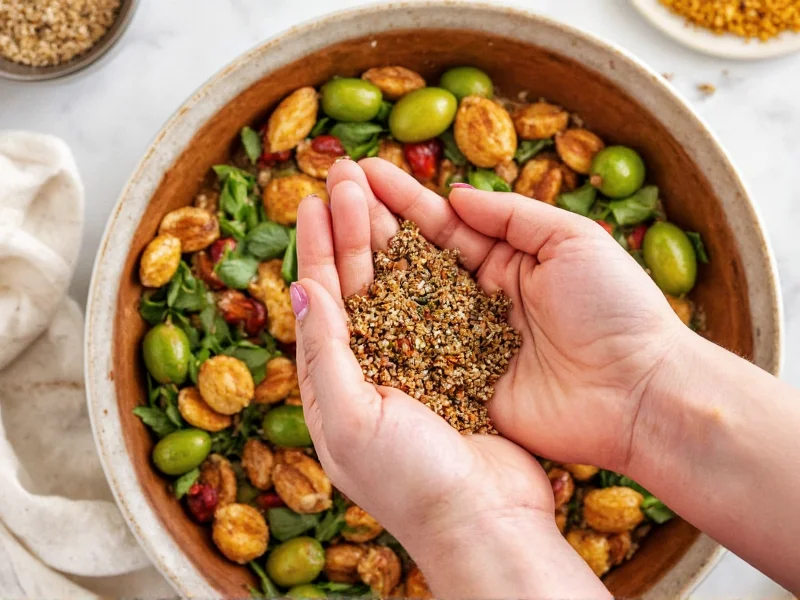Creating your own stuffing seasoning blend gives you complete control over ingredients and flavor intensity. Unlike store-bought mixes that often contain preservatives and excessive sodium, homemade versions let you adjust herbs to personal preference and dietary needs. This guide provides everything you need to know about crafting the perfect stuffing seasoning for your holiday meals or everyday cooking.
Essential Components of Traditional Stuffing Seasoning
The foundation of any quality stuffing seasoning consists of aromatic herbs and savory seasonings that complement bread and other stuffing ingredients. While regional variations exist across the United States, most traditional blends share these core components:
| Ingredient | Flavor Profile | Typical Proportion |
|---|---|---|
| Dried sage | Earthy, slightly peppery | 25-30% |
| Dried thyme | Floral, minty | 15-20% |
| Dried rosemary | Pine-like, citrus notes | 10-15% |
| Dried parsley | Mild, fresh | 10-15% |
| Onion powder | Savory, sweet | 10-12% |
| Celery seed | Grassy, slightly bitter | 8-10% |
| Salt | Enhances all flavors | 5-8% |
| Black pepper | Spicy, warm | 3-5% |
Step-by-Step Guide to Making Homemade Stuffing Seasoning
Creating your own stuffing seasoning blend takes just minutes and requires only basic kitchen equipment. Follow these steps for a perfectly balanced seasoning:
- Gather fresh, high-quality dried herbs (check expiration dates as stale herbs lose potency)
- Measure ingredients using precise measuring spoons for consistent results
- Combine all ingredients in a small bowl, whisking thoroughly to ensure even distribution
- Taste a small amount (diluted in water) to assess flavor balance before using
- Adjust proportions based on personal preference—add more sage for earthiness or thyme for floral notes
- Store in an airtight container away from light and heat
A standard homemade stuffing seasoning recipe yields enough for one traditional 9x13 inch baking dish of stuffing. For a basic blend serving 8-10 people, combine:
- 3 tablespoons dried sage
- 2 tablespoons dried thyme
- 1½ tablespoons dried rosemary
- 1½ tablespoons dried parsley
- 1 tablespoon onion powder
- 1 tablespoon celery seed
- 2 teaspoons salt
- 1 teaspoon black pepper
Customizing Your Stuffing Seasoning Blend
One advantage of making your own stuffing seasoning is the ability to create variations that suit specific tastes or dietary requirements. Consider these popular adaptations when preparing your homemade stuffing seasoning recipe:
Regional Flavor Variations
Southern-style stuffing often includes additional sage and black pepper, while Northern versions might feature more parsley and subtle herbs. Some coastal regions incorporate a pinch of seafood seasoning for added complexity in oyster stuffing.
Dietary Adaptations
For gluten-free stuffing seasoning alternatives, ensure all ingredients are certified gluten-free, particularly checking celery salt which sometimes contains gluten-based anti-caking agents. Vegan stuffing seasoning ingredients require no modifications as traditional blends are naturally plant-based.
Flavor Intensity Adjustments
When determining how much seasoning per loaf of stuffing you need, remember that fresh herbs require triple the amount of dried herbs. For milder flavor, reduce sage by 25% and increase parsley. For more robust flavor, add a pinch of red pepper flakes or smoked paprika to your best herbs for stuffing seasoning.
Proper Usage and Measurement Guidelines
Understanding proper seasoning ratios prevents under or over-seasoning your stuffing. For standard bread-based stuffing:
- Use 3-4 tablespoons of homemade seasoning blend per 8 cups of bread cubes
- Add seasoning to cooled broth before incorporating into bread for even distribution
- Always season in layers—mix some into the bread, some into the liquid component
- Taste the moistened mixture before baking and adjust as needed
When using your homemade stuffing seasoning recipe with alternative bases like cornbread or wild rice, reduce the seasoning by 25% as these ingredients have stronger inherent flavors that can overwhelm delicate herb notes.
Storage Recommendations for Longevity
Proper storage maintains the potency of your stuffing seasoning blend. Follow these storing homemade stuffing seasoning guidelines:
- Use dark glass or opaque containers to protect from light degradation
- Store in a cool, dry place away from stove or oven heat sources
- Label containers with creation date—most blends retain optimal flavor for 6-8 months
- Freeze in ice cube trays with olive oil for ready-to-use portions
Check seasoning freshness before holiday cooking by rubbing a small amount between your fingers and smelling—faded aroma indicates diminished potency requiring replacement or increased quantity.
Avoiding Common Seasoning Mistakes
Even experienced cooks make errors with stuffing seasoning. Watch for these pitfalls when preparing your traditional Thanksgiving stuffing spices:
- Using old, stale herbs that lack flavor intensity
- Adding salt late in the process, resulting in uneven distribution
- Overpowering with one herb (typically too much sage)
- Not accounting for salt content in broth when seasoning
- Adding seasoning to hot liquid, which can cause bitterness
For perfect results with your variations of classic stuffing seasoning, mix dry ingredients thoroughly before adding to bread, and always season the cooking liquid as well for layered flavor development.











 浙公网安备
33010002000092号
浙公网安备
33010002000092号 浙B2-20120091-4
浙B2-20120091-4